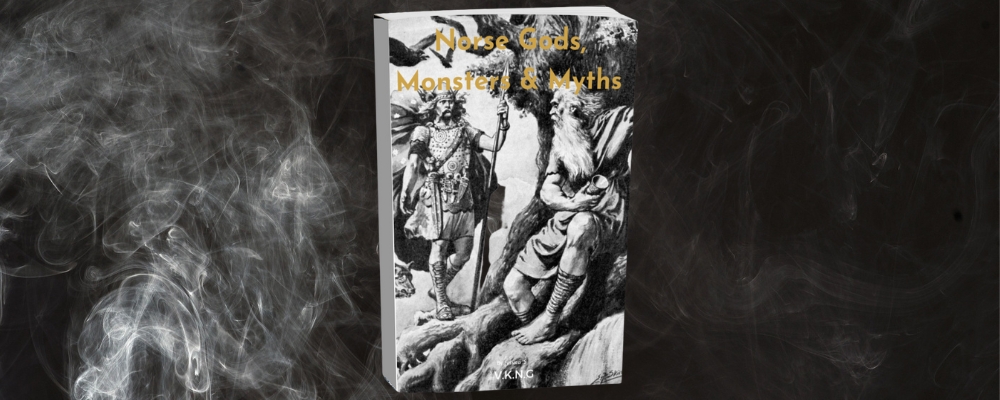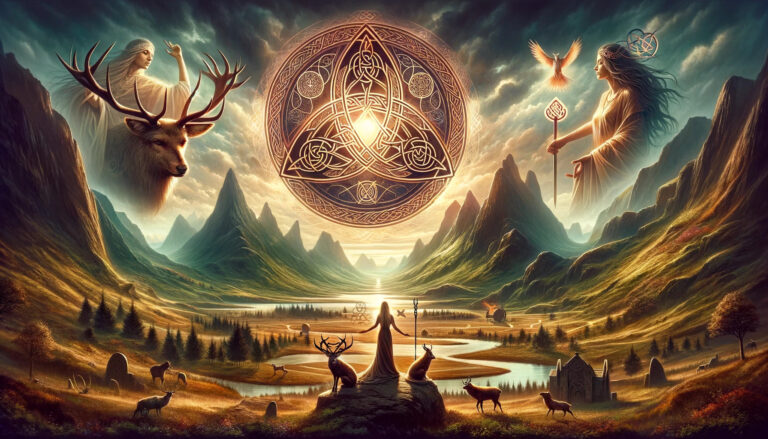Celtic religion has many interesting parallels with Norse religion. It was a rich and complex polytheistic religion with a variety of gods and goddesses linked with the natural forces in the universe.
The Celts lived across parts of France, Spain, Portugal, Germany, and Great Britain from the 6th century BC.
But what we know about these gods is pieced together like a puzzle from archaeological finds, passing comments in written sources, and cross-cultural studies because the Celts themselves left no written records about their deities, some of which were absorbed into Christian practices following the widespread conversion to Christianity in the 5th century.
While some Celtic deities seem to have been worshiped broadly across the Celtic world, others seem to have been local gods only worshiped by specific people at a certain location.
Today, let’s briefly meet some of the most popular and widely worshiped Celtic deities.
Bear in mind that Celtic religion spans a great space, both in terms of geographical area and time, so a lot of variation and inconsistency exists within ancient Celtic mythology.
The Pantheon of Celtic Deities
Below are brief descriptions of some of the most important Celtic pagan gods and goddesses.
Matres or the Morrigan
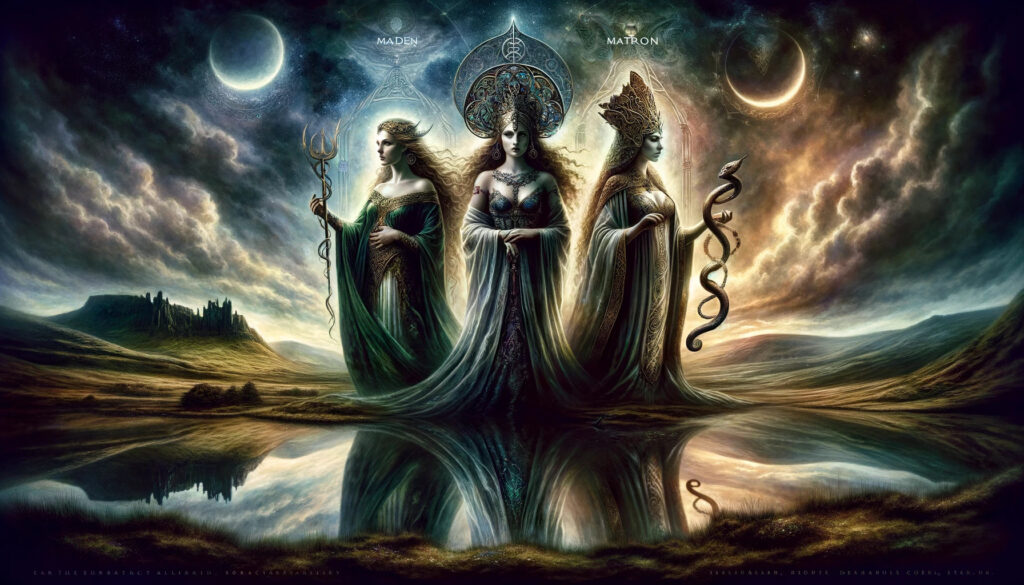
Matres, which means mothers (plural), or the Morrigan was a threefold goddess. She is depicted on votive offerings and altars across the Celtic world from the 1st to the 5th centuries.
She is one of the inspirations for the maiden, mother, and crone image with one woman appearing with loose hair, indicating maidenhood, another with a headdress suggesting a married woman, and the final one with snakes, suggesting death.
She is also associated with ideas of fate, past, present, and future, like the Norns in Norse mythology.
In Irish traditions, she is associated with war and fate. She often appears in the form of a crow, which is an interesting parallel with the ravens of Odin, the Norse god of war.
In her triplicate form, she is seen as three sisters, who sometimes have the names Badb (crow), Macha (grassy plain), and Anand or Nemain (venomous).
Cernunnos
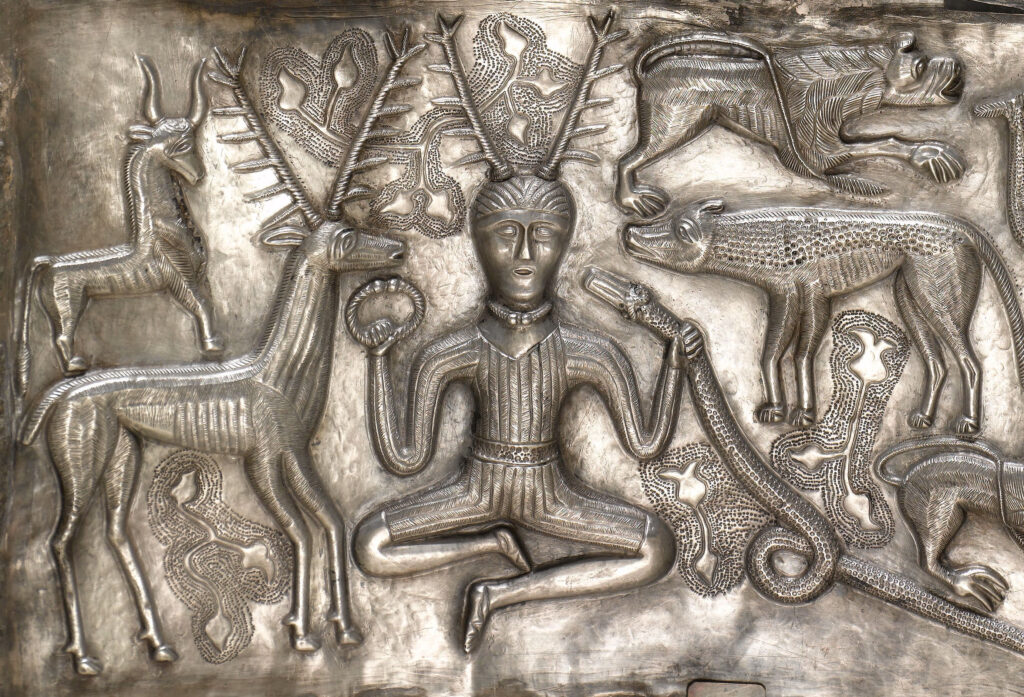
Cernunnos appears as a horned deity sitting cross-legged and surrounded by animals, and he often wears or holds a traditional Celtic torque.
This deity is depicted throughout the Celtic world, sometimes associated with the name Cernunnos, for example in Paris, but not always. However, they are all considered to be related deities.
His iconography suggests that the god was associated with animals and nature, and also fertility and prosperity, not unlike the Norse god Freyr.
He also seems to have had an association with crossroads and liminal spaces, the underworld, and the cycle of life and death.
A version of Cernunnos appears in Denmark, on a 1st century AD vessel known as the Gundestrup Cauldron.
It is one of the finest representations of the god surviving today.
In modern neo-paganism, Cernunnos is often treated as the consort of the great goddess. Male and female pairs are also a concept that was common in Celtic religion.
Male and female deities often appeared in pairs as divine couples.
Taranis
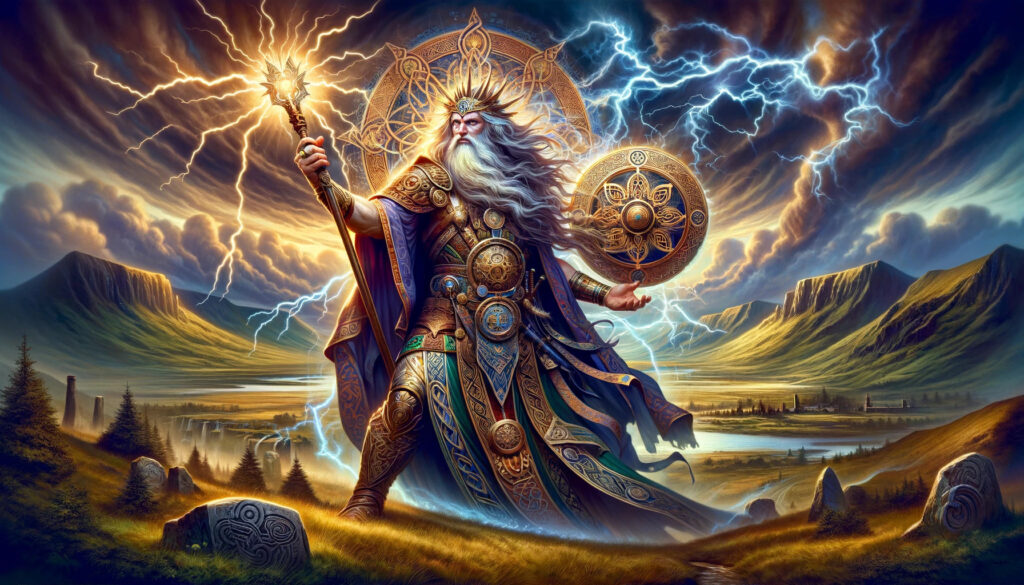
Taranis is the Celtic god of thunder, like the Norse god Thor, but according to the Roman poet Lucan, he received human sacrifices.
However, there is no archaeological evidence to support this potentially xenophobic commentary.
In representations, he is a bearded god with a thunderbolt in one hand and a wheel in the other, suggesting that he might also be related to the Greek god Zeus and the Roman god Jupiter.
His six-spoke chariot wheel symbol is quite common in the Celtic world as votive offerings at shrines and among burial goods, potentially worn as amulets.
The wheel seems to have been associated with ideas of mobility and swiftness of action.
This may have seemed appropriate for the god of thunder because he could quickly create a storm seemingly from nowhere.
It may also have been linked with ideas of a sky chariot that pulls the sun and the moon across the sky.
Again, not unlike Thor, Taranis was considered the strongest of the Celtic gods and the protector of the pantheon.
Epona
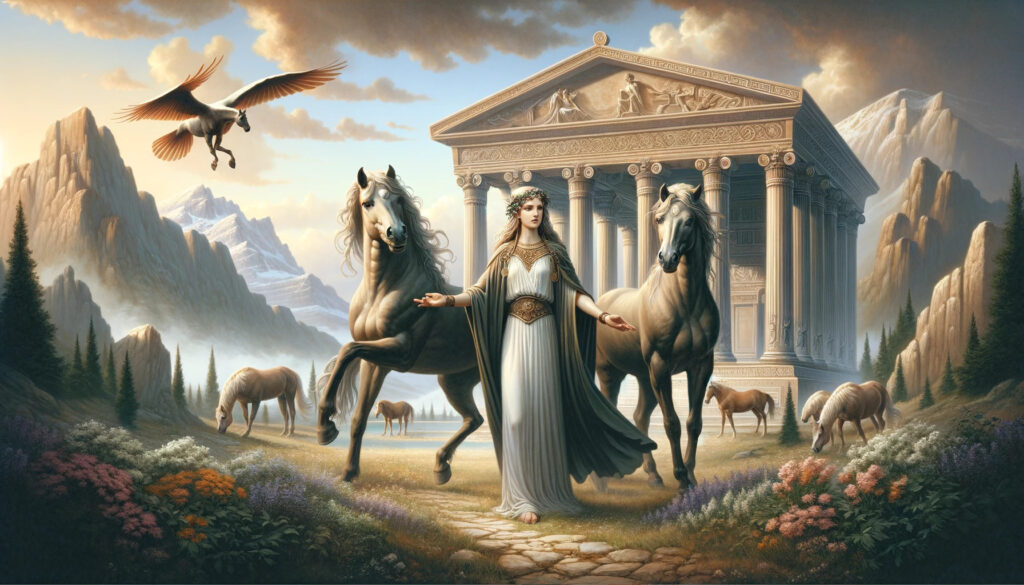
Epona, whose name means “great mare”, was the protector of horses, ponies, donkeys, and mules, all important animals in the Celtic world.
This linked her with fertility since these animals were used in farming, and she was often depicted with symbols of fertility such as the cornucopia and ears of corn.
Epona was popular with Roman troops and adopted many Roman-style attributes.
She is the only Celtic deity who had a temple in Rome as the patroness of the Roman cavalry.
Lugh
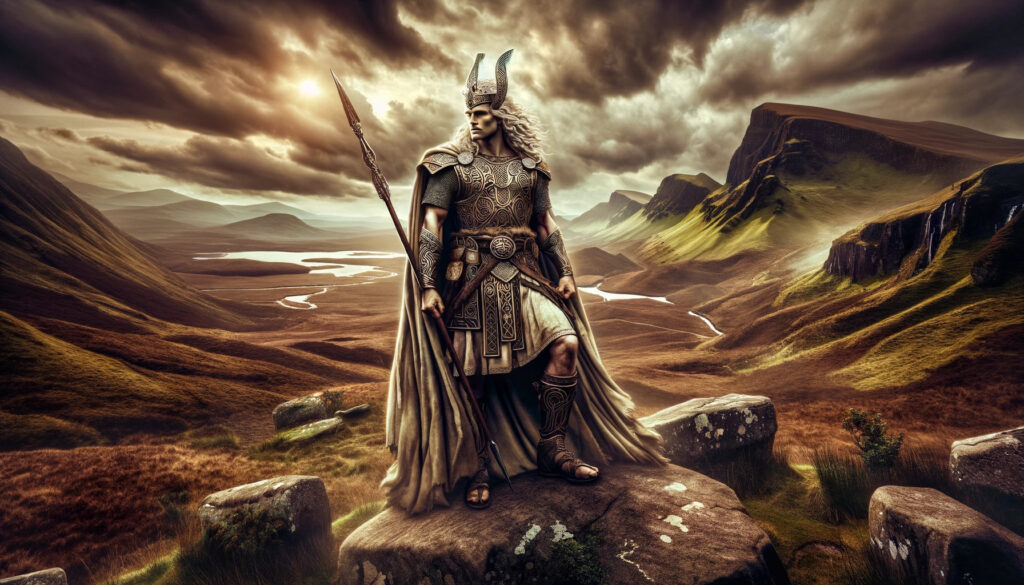
Lugh was a sun god associated with light, but also craftsmanship and justice. Julius Caesar suggested that he was the equivalent of the Roman god Mercury.
In Britain, Lugh was described as a great warrior who wielded a famous spear, not too different from Odin and his spear Gungnir.
Not unlike in Norse mythology, in British and Irish religion there was a main clan of Celtic gods, called the Tuatha de Danann, and they were opposed by another supernatural group called the Fomorians, who occupied the land before the gods arrived.
Lugh was half Tuatha de Danann and half Fomorian.
But he famously killed his Fomorian grandfather Balor and led the Tuatha de Danann to victory against them.
Brigid
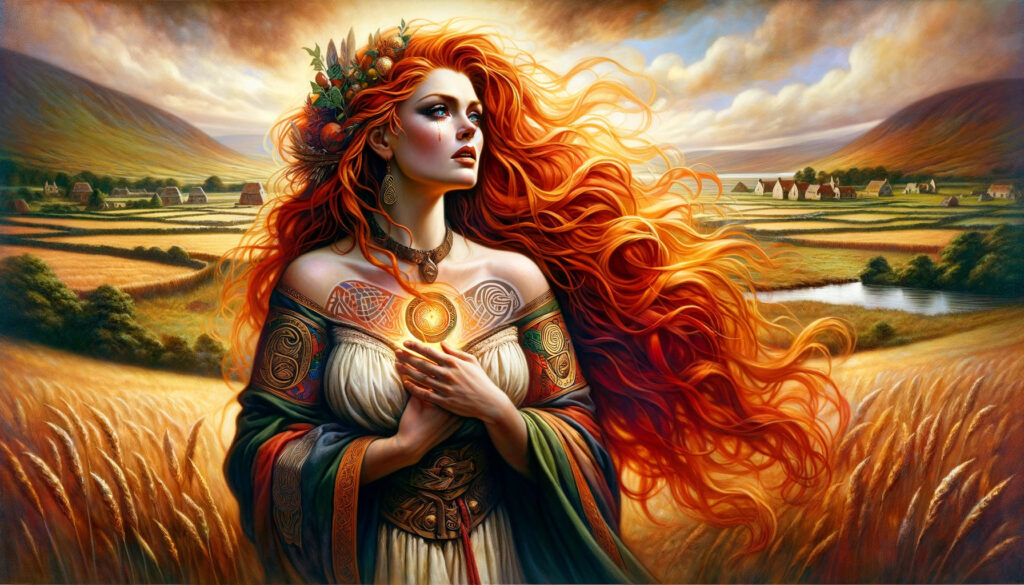
Principally worshipped in Ireland, Brigid was associated with poetry, healing, protection, smithing, and domesticated animals.
She was also sometimes represented as a triple Celtic goddess, all named Brigid but responsible separately for poetry, healing, and smithing. After the Romans arrived, she was associated with the goddess Minerva.
Like Norse mythology, the Celtic gods were all related and Brigid was well connected. She was the daughter of the Dagda, a king or druid-type figure.
She was also the wife of Bres, a Formorian as a peace treaty, and they had a son Ruadan. He killed a Formorian smith, and the smith killed him before dying. She grieved long and loud.
In this story, Brigid feels connected to the Norse goddess Frigg, who lost her son Balder, and the goddess Freyja, whose tears are responsible for creating gold and amber in the world.
Brigid was very popular and syncretized with the Catholic Saint Brigit. She is also thought to be related to the Voodoo goddess Maman Brigitte.
The Dadga
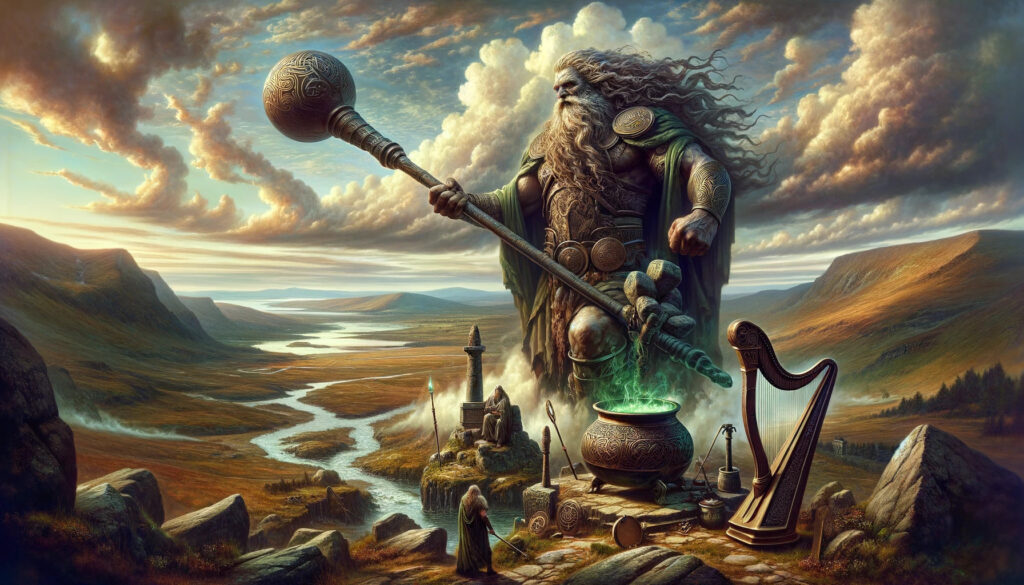
The Dagda is the “good god”, and like Odin, he is the father of the majority of the gods and goddesses described in Celtic mythology within the Tuatha de Danann clan.
Described as almost an ogre with a club, he is a god of fertility and agriculture but also manliness and strength. He is associated with magic, Druidry, and wisdom, again in a similar way to Odin.
He has a magic club that kills with one end and can restore life with the other.
He has a cauldron that never runs empty and a magic harp that can control men’s emotions and change the seasons.
He is the male counterpart to the Morrigan, who is his consort.
Balor
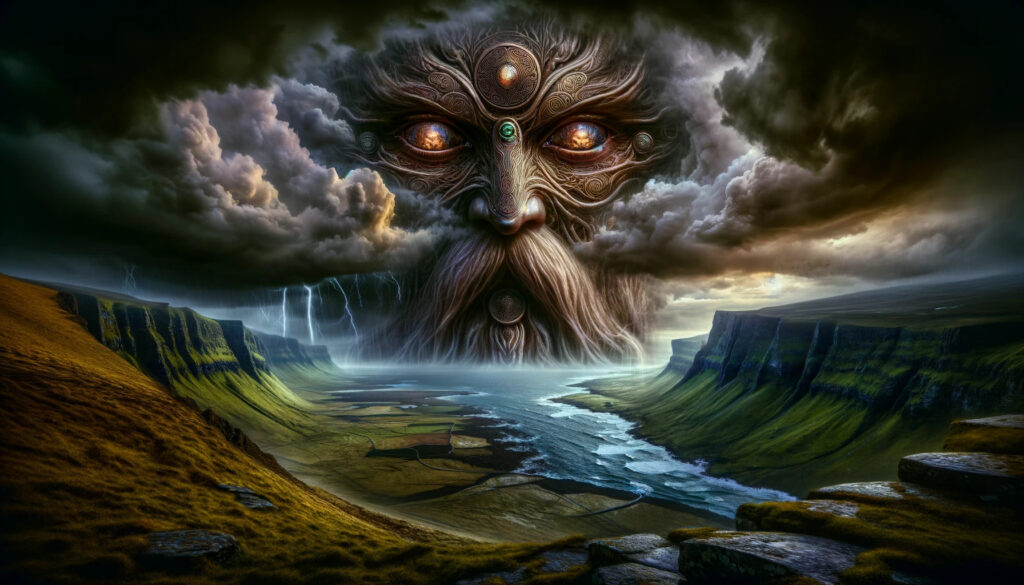
Balor is the Celtic god of chaos and the leader of the Fomorians, drawing parallels with the Norse jotun Loki.
He is often depicted as a cyclops with one eye, or a man with three eyes. When he opens his third eye, it causes destruction, so it has seven different coverings to prevent inadvertent disasters.
Balor is most famous for having been killed by his son Lugh, allowing the Tuatha de Dannan to take control of the land.
Ancient Celtic Gods and Goddesses
Celtic mythology and religion is a rich and complex ideology that has some striking similarities with Norse religion.
This is perhaps not surprising since both grew up in northern Europe, with Norse ideas traveling northwest to Scandinavia, and Celtic southwest to France, Spain, and the British Isles.
Both ideologies were largely replaced by Christianity, but are making a comeback as more people look to better understand their ancient cultural roots.
